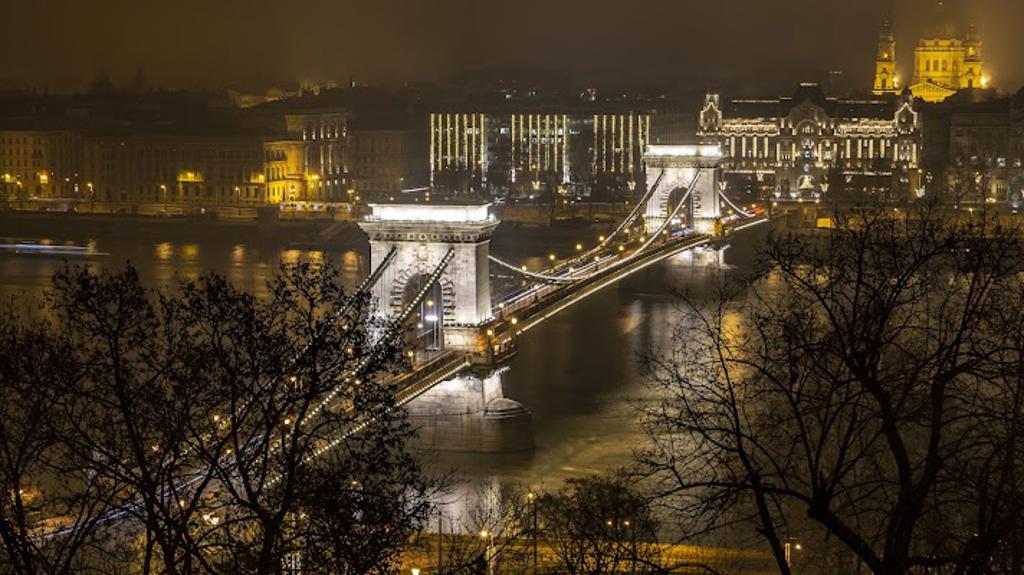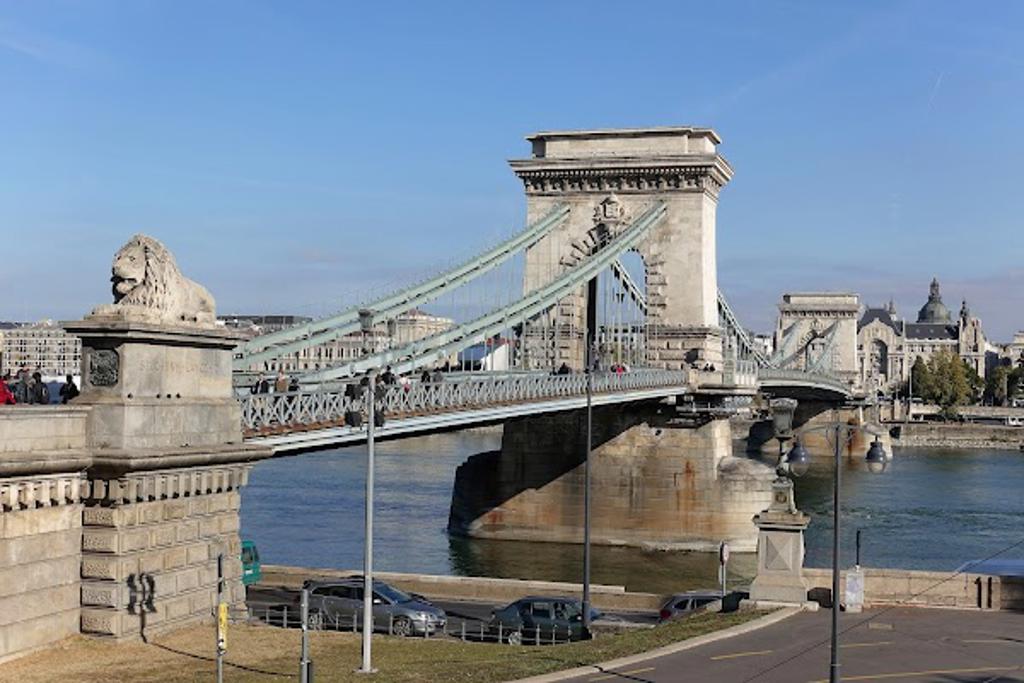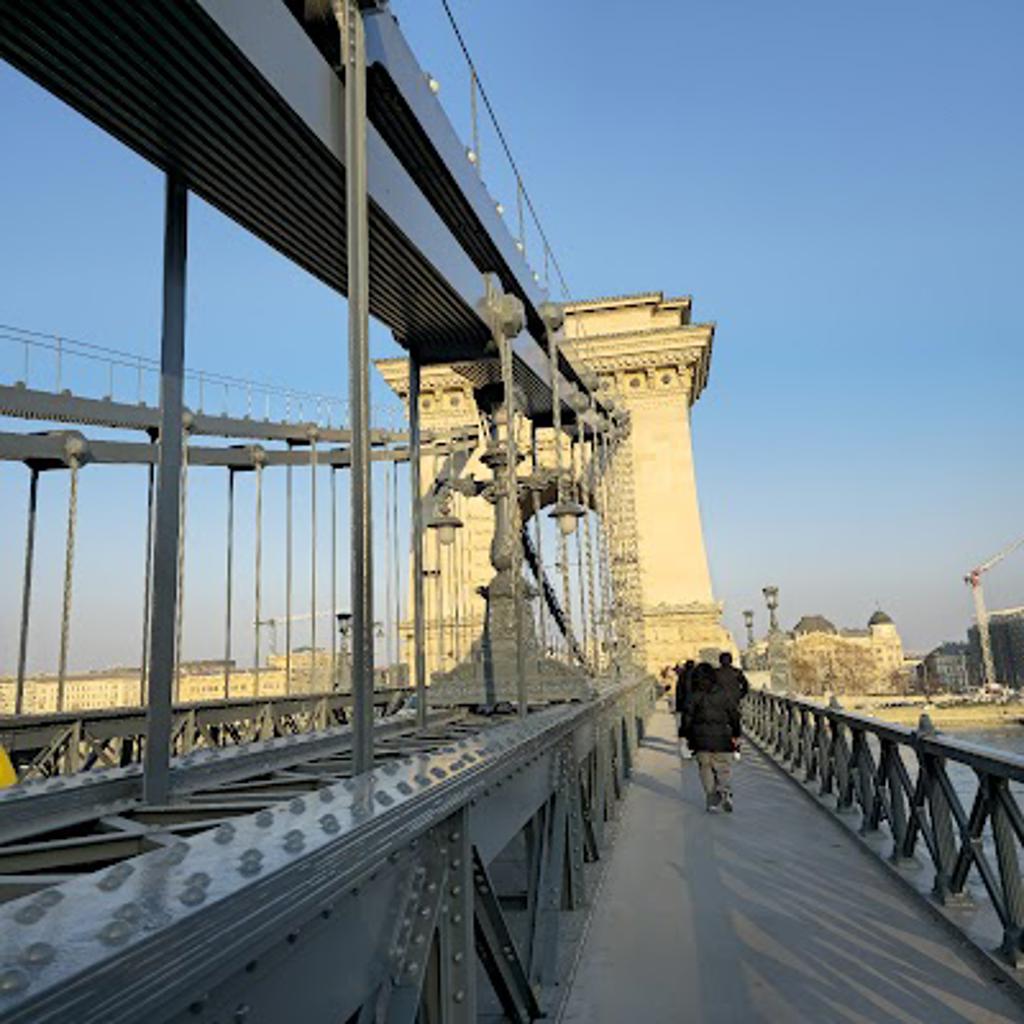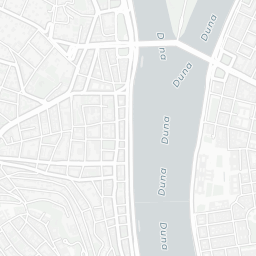About Hollán Sándor
The Széchenyi Chain Bridge stretches across the Danube River, connecting Buda and Pest. Its stone towers rise like sentinels, framing the suspension cables that hold the bridge steady. The intricate ironwork gleams under the sunlight, showcasing 19th-century engineering brilliance. Lions carved in stone guard each end, their silent presence adding a sense of majesty to the structure. The bridge is not just a crossing; it is a symbol of unity and progress.
History of the Chain Bridge
Completed in 1849, the Széchenyi Chain Bridge was the first permanent bridge to link Buda and Pest. Count István Széchenyi, often called the "Greatest Hungarian," championed its construction to modernize Hungary and connect its people. Designed by English engineer William Tierney Clark and built by Scottish engineer Adam Clark, the bridge became a marvel of its time. It survived wars and reconstructions, standing as a testament to resilience and innovation.
Plan your perfect trip to Budapest with Travo! Download now and start exploring.
Count István Széchenyi’s Vision
Count Széchenyi envisioned the bridge as more than a physical connection; he saw it as a way to unite Hungary’s divided regions. His dedication to progress earned him a place in history as a reformer and statesman. The bridge carries his name, honoring his role in shaping Hungary’s future. Today, visitors can reflect on his legacy while walking across this iconic structure.
Artistic and Architectural Details
The bridge’s design combines strength and elegance. The suspension system, supported by massive stone towers, was groundbreaking in its era. The lions at each entrance, sculpted by János Marschalkó, symbolize courage and protection. Their lifelike features invite closer inspection, while the iron chains above create a striking visual rhythm. The bridge’s harmonious blend of form and function makes it a masterpiece of engineering and art.
Marks of Time
During World War II, the bridge was destroyed but later rebuilt in 1949, exactly 100 years after its original opening. The reconstruction preserved its original design, ensuring that its historical significance remained intact. Today, the bridge stands as a reminder of Hungary’s ability to rebuild and thrive despite challenges. Its enduring presence connects the past with the present.
Living Legacy
The Széchenyi Chain Bridge is more than a landmark; it is a cultural icon. Locals and tourists alike walk its length, enjoying views of the Danube and the city’s skyline. Festivals and events often center around the bridge, making it a vibrant part of Budapest’s life. Its role as a symbol of unity continues, reminding all who cross it of Hungary’s rich history and bright future.






Location
Széchenyi lánchíd, 1011, Budapest





